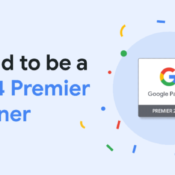/
/
The Science of Image Optimization
When people optimize their site for search engines, they often neglect one major area: images for their search traffic. In regards to SEO (Search Engine Optimization), it’s important to use relevant, descriptive and keyword-rich file names are imperative for image optimization, much in the same way certain keywords help your webpage rank on search engines. Not only do search engines use the content on your website to help drive people to your website, but file names also aid in image-based search engines like Google Images. File naming also helps with regular ranking. Google cannot “see” images, so optimizing images is just as important to page ranking as keyword optimizing.
 For example, if you have an image named “picture01.jpeg”, Google would have no idea what the image is. Instead of “picture01.jpeg”, a much better file name would be “2015-Chevrolet-Silverado-1500-LTZ-Crew-Cab.jpeg”. Just remember that context is everything. Careful not to be "spammy" by writing excessively long file names or keyword stuffing. If you are not going to get too detailed, just be sure to use relevant and descriptive keywords when naming your images.
For example, if you have an image named “picture01.jpeg”, Google would have no idea what the image is. Instead of “picture01.jpeg”, a much better file name would be “2015-Chevrolet-Silverado-1500-LTZ-Crew-Cab.jpeg”. Just remember that context is everything. Careful not to be "spammy" by writing excessively long file names or keyword stuffing. If you are not going to get too detailed, just be sure to use relevant and descriptive keywords when naming your images.
 PNG - Best of both worlds produces background transparency without jagged edges. PNG format supports RGB, indexed color, grayscale, and bitmap mode images. PNG also preserves transparency in grayscale and RGB images.
PNG - Best of both worlds produces background transparency without jagged edges. PNG format supports RGB, indexed color, grayscale, and bitmap mode images. PNG also preserves transparency in grayscale and RGB images.
Naming Your Files
When it comes down to naming your file’s images, remember the goal is to make it easy for search engines to understand what the image is. For example, if you have an image named “picture01.jpeg”, Google would have no idea what the image is. Instead of “picture01.jpeg”, a much better file name would be “2015-Chevrolet-Silverado-1500-LTZ-Crew-Cab.jpeg”. Just remember that context is everything. Careful not to be "spammy" by writing excessively long file names or keyword stuffing. If you are not going to get too detailed, just be sure to use relevant and descriptive keywords when naming your images.
For example, if you have an image named “picture01.jpeg”, Google would have no idea what the image is. Instead of “picture01.jpeg”, a much better file name would be “2015-Chevrolet-Silverado-1500-LTZ-Crew-Cab.jpeg”. Just remember that context is everything. Careful not to be "spammy" by writing excessively long file names or keyword stuffing. If you are not going to get too detailed, just be sure to use relevant and descriptive keywords when naming your images.
Alt Tags
Alt tags are a text alternative to images when a browser can't properly render them. Even when they are rendered, if you put your cursor over the image you will be able to see the alt tag. Using alt tags can help websites by associating keywords to your images. Example: <img src=”2015-Chevrolet-Silverado-1500-LTZ-Crew-Cab.jpeg” alt=”2015 Chevrolet Silverado 1500 LTZ Crew Cab”> Just like when you name your image files, be clear and don’t use filler. However, do not use alt tags for decorative images. Search engines may penalize you for over-optimization. Decide if the image can enhance SEO or the user’s experience. If not, then don’t add it.Page Load Times
The “Site Speed” tool in Google Analytics can help you monitor your page load times. A general rule of thumb for page load time is between 3 and 5 seconds. Amazon found that if their pages slow down by 1 second, they lose $1.6 billion a year. A good way to combat this is to pay attention to the size of your files. You can decrease the size of your images files by saving for web. Using appropriate file formats (ex. JPEG, PNG, GIF).File Breakdown
JPEG – Good for photographs. Supports CMYK, RGB (millions of colors), and grayscale color modes, unlike GIF format. JPEG does not preserve transparency.
 PNG - Best of both worlds produces background transparency without jagged edges. PNG format supports RGB, indexed color, grayscale, and bitmap mode images. PNG also preserves transparency in grayscale and RGB images.
PNG - Best of both worlds produces background transparency without jagged edges. PNG format supports RGB, indexed color, grayscale, and bitmap mode images. PNG also preserves transparency in grayscale and RGB images.

Recent Posts
Mudd Advertising
Let’s leverage!
Mudd Advertising
Politics Schmolitics!
Mudd Advertising
Mudd has been promoted to Google Premier Partner
All Categories
Tags
anonymous website visitor identification
automotive
branding
cable
case study
chevrolet
chevy
data
digital marketing
direct marketing
display
dynamic inventory display
facebook
first party
google
google analytics
google premier partner
internet marketing
local seo
Matthew Moody
media
mobile search
mobile seo
MUDDid
online marketing
online video
organic
organic search
pay per click
political
ppc
promotion
retargeting
search engine marketing
search engine optimization
sem
seo
social advertising
social media
social media marketing
strategy
traditional marketing
traditional media
Volunteer Spotlight
youtube




